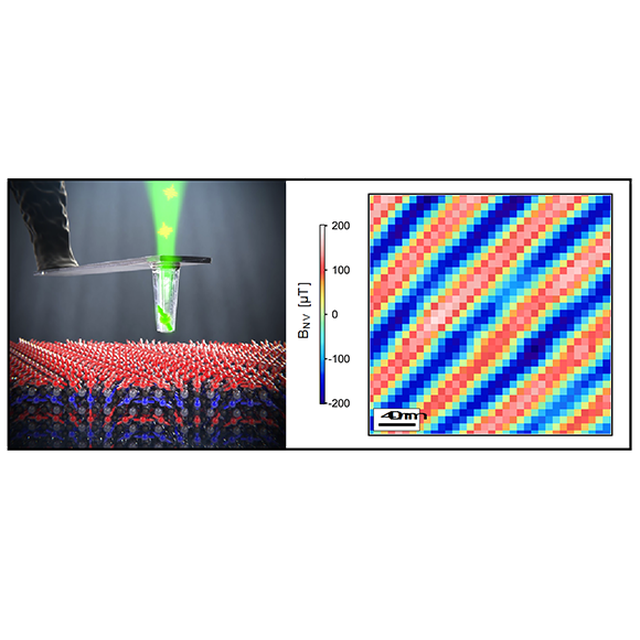Using an artificial atom in diamond as an ultrasensitive magnetic field detector, physicists have for the first time imaged the leakage field radiated by a compound of the vast family of antiferromagnets. This observation allowed them to study the effect of an electric field on the sinusoidal modulation of the antiferromagnetic order in a multiferroic material.
Reference:
Real-space imaging of non-collinear antiferromagnetic order with a single spin magnetometer,
I. Gross, W. Akhtar, V. Garcia, L. J. Martinez, S. Chouaieb, K. Garcia, C. Carrétéro, A. Barthélémy, P. Appel, P. Maletinsky, J.-V. Kim, J. Y. Chauleau, N. Jaouen, M. Viret, M. Bibes, S. Fusil & V. Jacques
Nature (2017) / DOI : https://doi.org/10.1038/nature23656
- Laboratoire Charles Coulomb (L2C, CNRS/Univ. Montpellier)
- Unité mixte de physique CNRS/Thales (CNRS/Thales/UPSud/Univ. Paris Saclay)
- Centre de nanosciences et nanotechnologies (C2N, CNRS/UPSud/Univ. Paris Saclay)
- Service de physique de l’état condensé (SPEC, CNRS/CEA/Univ. Paris Saclay)
- Synchrotron SOLEIL (CNRS)
Contact:
- Joo-Von Kim, CNRS researcher
Figure: (left) An artificial atom (center NV represented by the green arrow) inserted into a diamond tip is used to map the magnetic field radiated by an antiferromagnetic material. Under radiofrequency excitation, the amplitude of the magnetic field is coded on the fluorescence intensity of the NV center illuminated by a green laser. (right) Quantitative mapping of the magnetic field produced by the sinusoidal modulation of the antiferromagnetic order in a 30 nm thick BiFeO3 film.









